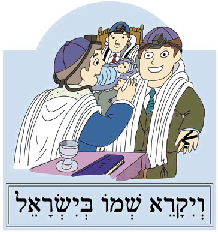
Quickie/Funfact: Shemos 35:2 "On six days, work may be done, but the seventh day shall be holy for you, a day of complete rest for Hashem; whoever does work on it shall be put to death."
Rav Baruch Simon Shlit"a quotes in his sefer, Imrei Baruch, a Shl"A HaKadosh (Meseches Shabbos P'Ner Mitzvah O'9) that has to do with the way that we greet each other on Shabbos. The Shl"A comments that it is most appropriate that when a person greets a friend on Shabbos he not greet him in the same way that he would greet his friend during the week (Good Morning, Good Afternoon, Good Night). Rather he should try to say "Shabbat Shalom" in order to specifically be mikayeim the mitzvah of "Zachor es Yom HaShabbos". Furthermore it is specifically fitting to finish off the greeting with the word "Shalom" because Shabbos is a day of peace. It is the responsibility of every person to distance himself from anger as much as possible on Shabbos.
(Shemos 35:30) "Moshe said to the Children of Israel, See Hashem has proclaimed by name, Betzalel son of Uri son of Hur, of the tribe of Judah."
The Midrash Tanchuma on this weeks Parsha says that whenever a person takes part in a abundance of mitzvos he acquires a name for himself. The Midrash continues to explain that a person is given three names within their life time. One name is given by ones parents, one name is given by ones friends, and one name is given based how a person distinguishes himself in life. No person could be more exemplary of this midrash other than Bitzalel, he created a great name for himself and therefore merited to build the Mishkan.
Bitzalel acted skillfully by preparing to erect the Mishkan by acquired wisdom, understanding, and knowledge from Hashem. For the verse says, (Shemos 35:31-32) "He filled with Godly spirit, with wisdom, insight, and knowledge, and with every craft. To weave designs, to work with gold, silver and copper." Nonetheless it is the Jewish belief that a person cannot accomplish anything that he was not destined to initially accomplish. From Bitzalel's birth he was destined to be a vessel that was to be utilized for the good of Klal Yisrael in order to build the Mishkan. Nonetheless a person cannot become something that they do not bring upon themselves. Bitzalel honed his skills and used them to serve Hashem and for the betterment of Klal Yisrael.
Rav Eliezer Simcha Weiss notes that according to the Midrash each person has three names: The first is given from one's parents, the second is given by one's friends, and the last which a person makes for himself. Bitzalel was not his first or his second name, rather Bitzalel was his third and most important name, it was the one that he had made for himself because of his many merits during life.
Although we can change our legal names, when we are in the earliest stage of infancy our parents give us a name that we identify ourselves with. Often times our friends will give us an additional name that somewhat represents a few of our character traits and the surroundings in which we dwell. Our real name however, is the name that we create for ourselves. The name that we create based on the way that we chose to lead our lives.
Bitzalel chose to live in the shade of G-d, thus he merited having an honorable name. What do we want our names to be?
Have a Fantastic Shabbos.......or should I say SHABBAT SHALOM!















